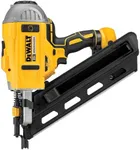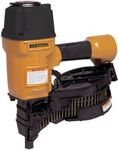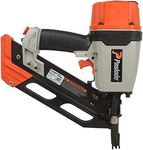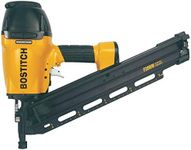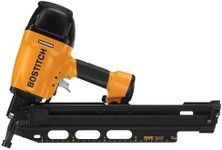Buying Guide for the Best Framing Nail Guns
Choosing the right framing nail gun can make construction or renovation projects much easier and more efficient. The best tool for you depends on the type of work you plan to do, how often you’ll use it, and your comfort with different tool features. Understanding the key specifications will help you match a nail gun to your needs, ensuring you get a tool that’s safe, reliable, and effective for your projects.Power SourceThe power source refers to how the nail gun is powered—commonly by air (pneumatic), battery (cordless), or fuel (gas-powered). Pneumatic nail guns use an air compressor and are known for consistent power, making them great for heavy-duty, continuous work. Cordless models offer more mobility since they don’t need hoses or cords, but may have less power and require battery charging. Gas-powered nailers are portable and powerful but need fuel cartridges. If you work in one place and need lots of power, pneumatic is ideal. For moving around or working in tight spaces, cordless or gas-powered might suit you better.
Nail Size CompatibilityThis spec tells you the range of nail lengths and thicknesses the gun can handle. Framing nail guns typically use nails from about 2 to 3.5 inches long. Some guns are limited to shorter nails, while others can handle the full range. If you’re doing standard framing, a gun that supports up to 3.5-inch nails is best. For lighter work or smaller projects, a smaller range may be enough. Always match the nail size to your project’s requirements.
Magazine CapacityMagazine capacity is the number of nails the gun can hold at once. Higher capacity means fewer reloads, which is helpful for big jobs. Magazines usually hold between 20 and 100 nails. If you’re working on large projects or want to minimize downtime, look for a higher capacity. For occasional or small jobs, a lower capacity may be fine and can make the tool lighter.
Weight and ErgonomicsWeight and ergonomics refer to how heavy the nail gun is and how comfortable it is to hold and use. Heavier guns can be tiring if you use them for long periods, while lighter models are easier to handle, especially overhead or in tight spaces. Ergonomic features like comfortable grips and balanced design reduce fatigue and improve control. If you expect to use the tool a lot or in awkward positions, prioritize lighter, well-designed models.
Firing ModesFiring modes describe how the nail gun shoots nails—usually either sequential (one nail per trigger pull) or bump/rapid fire (nails fire as long as the trigger is held and the nose is pressed). Sequential mode is safer and better for precision, while bump fire is faster for big jobs. Some guns offer both. If you’re new to nail guns or need accuracy, sequential is best. For speed on large projects, bump fire can be useful.
Depth AdjustmentDepth adjustment lets you control how deep the nail goes into the material. This is important for different wood types and project needs. Some guns have tool-free adjustment, making it easy to change settings on the fly. If you work with various materials or want a clean finish, look for easy and precise depth adjustment.
Jam Clearing MechanismA jam clearing mechanism helps you quickly fix nail jams, which can happen during use. Some nail guns have tool-free jam release, making it simple to clear jams without extra tools. This feature is important for saving time and reducing frustration, especially if you’re working on big projects. If you want less hassle, look for a model with easy jam clearing.


